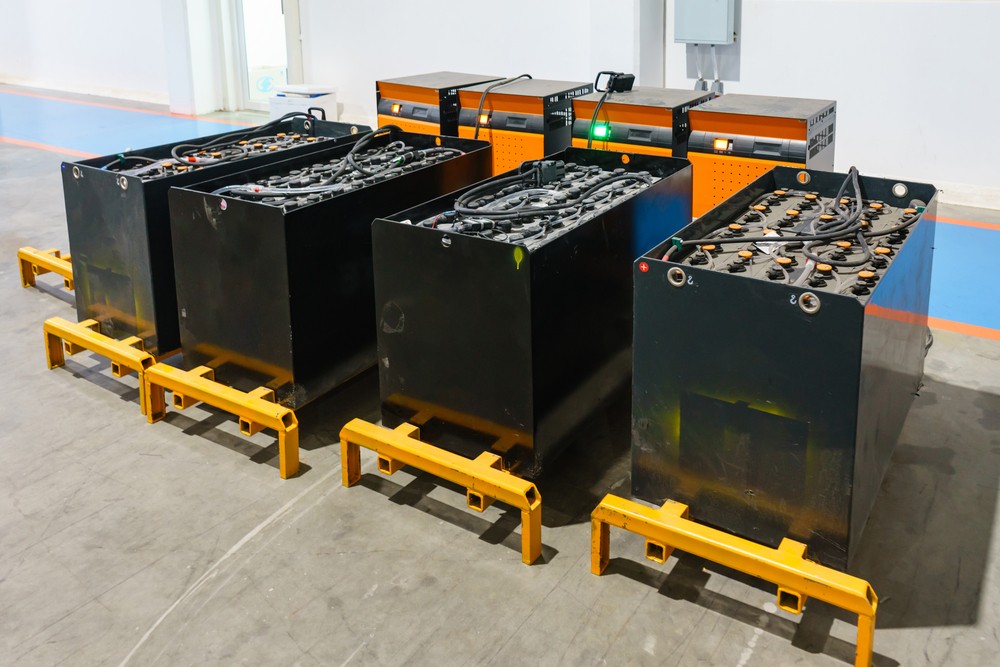Traction battery – which one to choose and how to charge?
Warehouses and logistics centers cannot operate without forklifts. These cannot function without adequate power supply. This is due to traction batteries, which are reliable and very durable. How to choose the right traction battery and how to charge it so that it remains functional as long as possible?
Contents
How does a traction battery work?
Traction battery is a type of battery with excellent durability. Its service life is estimated at approximately 1500 charging cycles. It is also exceptionally resistant to mechanical stress. For this reason, it is used to power forklifts and lift trucks.
Traction batteries may have diffelease capacities. It depends on the number of cells that constitute them. Traction cells are placed in a metal box covered with acid-resistant material, which ensures their safe use.
Traction batteries are most often part of a gel battery, which, thanks to its structure, is very durable and reliable. It is a proven way to power electrical devices, also valued for its efficiency and reliability.
Check service of lifts
In order to do so traction batteries for forklifts fulfill their functions properly for as long as possible, they need to be taken care of. There are several rules that are worth following to ensure long, trouble-free battery life. It is also worth approaching the issue of its selection carefully, because the parameters of the equipment are very important.
Forklift batteries – how to choose?
Electric forklifts are very popular nowadays. Without them, warehouses and other similar institutions basically could not function. Their efficient operation largely depends on the type of battery, which should be properly selected in terms of parameters. However, production technologies are constantly being developed, so the available solutions are very wide. This in turn affects the difficulty of the choice.
Forklift traction batteries vary e.g..:
- generated voltage – expressed in volts (e.g. 6, 8, 12 V);
- capacity – expressed in ampere-hours (Ah), indicating how long the battery will last;
- manufacturing technology – lead-acid, gel or AGM, and lithium-ion;
- dimensions.
A well-selected traction battery is efficient and durable, and also ensures low operating costs of the forklift. To enable efficient, trouble-free operation, you also need to optimize the charging process.
How to charge traction batteries?
As mentioned, the durability of traction batteries depends largely on how they are handled. The charging process is particularly important. Traction batteries should be charged immediately after discharge, while not allowing the charge level to drop below 20% of the rated capacity. Discharging below this value or even "to zero" has a destructive effect on the active mass, leading to its wear. Meaning that batteries lose their performance also during subsequent cycles they work shorter hours.
Therefore, every workplace that regularly uses forklifts or other similar devices using traction batteries has a battery charging area. Employees are trained in the proper handling of batteries, which helps ensure business continuity.

What determines the charging time of the traction battery?
How long individual forklift traction batteries charge can also make a difference. Of course, the most desirable model will be one that allows both long operation and quick recharging. The time it takes to replenish battery power depends on two main factors: charge rate and charger type.
Charge factor means the ratio between ampere-hours (Ah) charged and ampere-hours consumed. In most traction batteries it is 1,2 - which means that they need to be supplied with 1,2 times more energy than was consumed.
The second important element is the charger. Battery charging area can be equipped with conventional, low-frequency or high-frequency chargers. The latter are definitely more expensive, but they work much faster. They also help keep traction batteries in good condition, which makes them much more durable.
Traction batteries – proper charging
You should be aware that charging a traction battery involves some risk. Therefore, it is necessary to take certain precautions.
Firstly, battery charging zone should be located in a separate room, away from any flammable objects. You should also ensure adequate ventilation to prevent the accumulation of compressed gas produced during the charging process from the combination of released hydrogen and oxygen present in the air. All electrical installation elements in the room should be explosion-proof. The chargers themselves should be placed on platforms, which will minimize the risk of fire. This risk occurs with lead acid
Charging should always be performed only by properly trained personnel. If you notice any damage to the cables, stop charging and call technical assistance, as the traction battery is difficult to extinguish in the event of ignition.


